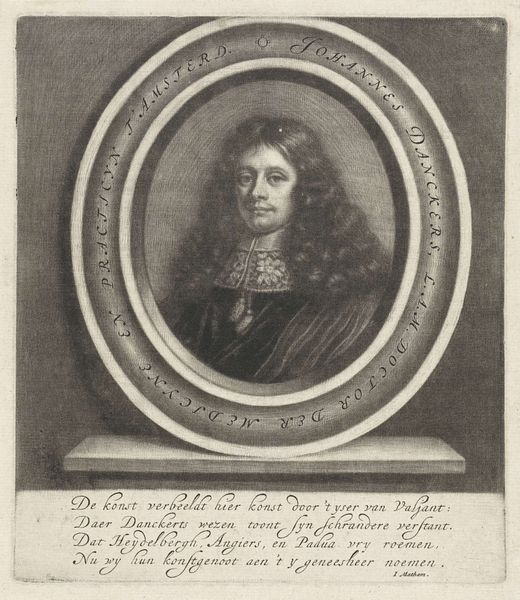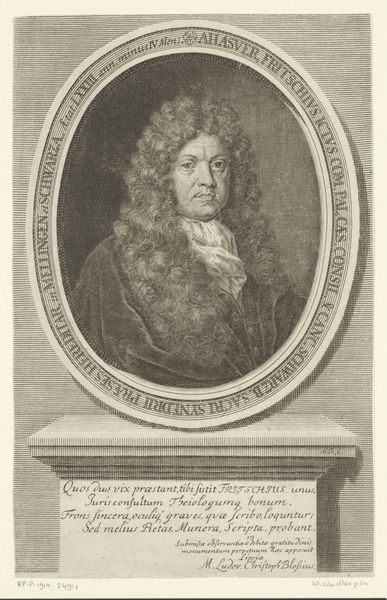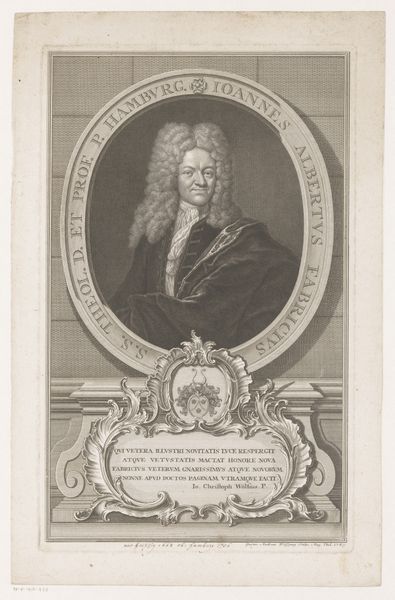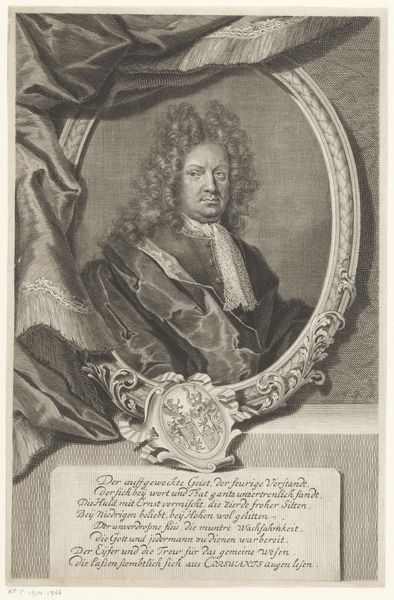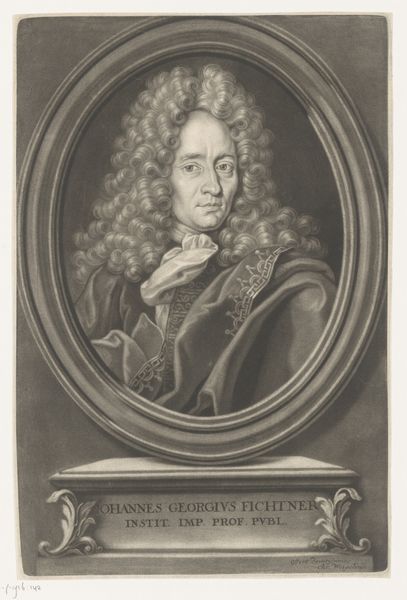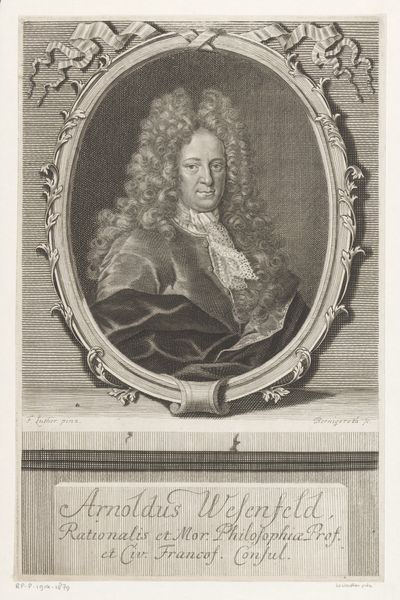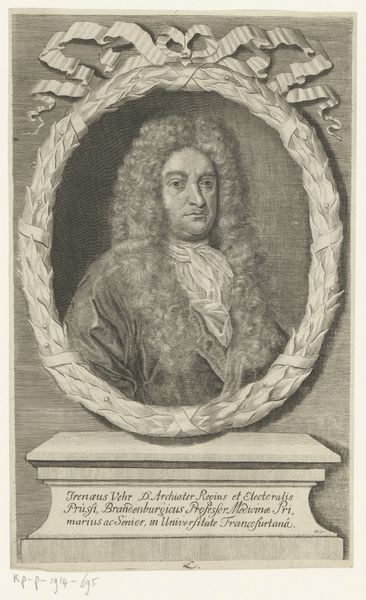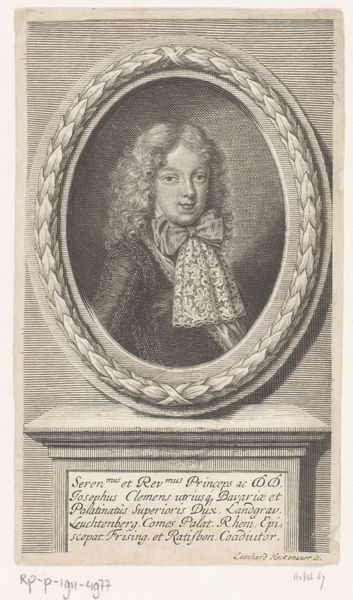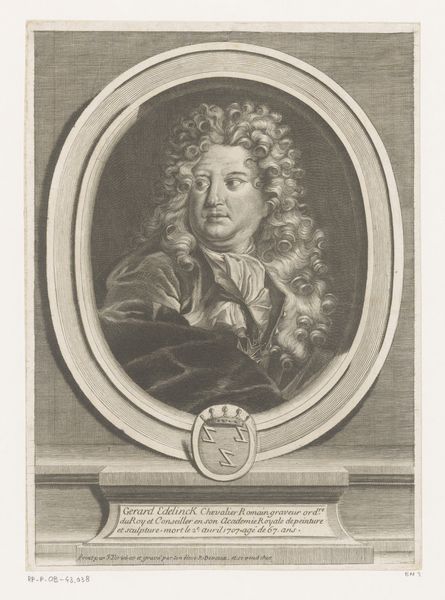
print, engraving
#
portrait
#
baroque
# print
#
history-painting
#
academic-art
#
engraving
Dimensions: height 298 mm, width 189 mm
Copyright: Rijks Museum: Open Domain
Curator: Standing before us is an engraving from 1711. It's a portrait of Gottlob Krantz by Johann Tscherning, currently held at the Rijksmuseum. Editor: The wig is magnificent! All that painstakingly rendered swirling hair; the skill involved just boggles my mind. You can almost feel the weight of it. Curator: It’s interesting how these portraits served specific social functions, isn't it? This wasn't just about capturing a likeness. It was a declaration of status. Krantz, as Rector and Professor, is carefully presented to project authority and erudition within the academic and social structures of the time. Editor: Absolutely. And look at the inscription! An entire laudatory poem beneath the portrait, celebrating Krantz. It shows you just how deeply enmeshed craftsmanship was in social practice; someone put real labor into composing and engraving those lines of praise, furthering Krantz's public image. Curator: The Baroque style is certainly on full display here, reflecting the artistic tastes and the representational strategies favored by elites during the period. Editor: Consider also how Tscherning made this print. He transferred Thomhan's original portrait of Krantz by cutting lines into a copper plate. Think about that manual labor; reversing the design, burnishing the metal. A really involved reproductive process that, though it diffuses Krantz's image more broadly, always requires this specific skillset. Curator: And consider who these prints circulated among! Likely other scholars and members of the elite class who moved in similar social circles, furthering not just Krantz’s reputation, but reaffirming the hierarchical structure of society. Editor: So true! Looking closely at it, one can admire the craft, time, and process poured into its making; the dense weave of tiny engraved lines to define this image—the hands on experience and the knowledge in its making... It gives a voice and a history to the image that goes beyond the representation of its subject. Curator: I think that's a crucial insight. It moves beyond mere representation, inviting us to unpack not only the history within the image, but the image *as* a piece of history. Editor: Right! Well, thanks to that perspective, I feel like I've gained a much broader appreciation for portraiture—how this kind of craft gives the wealthy and powerful enduring material presence in culture and time.
Comments
No comments
Be the first to comment and join the conversation on the ultimate creative platform.




